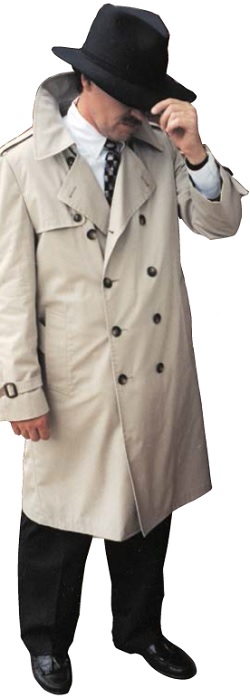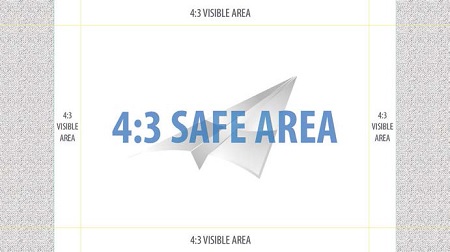Cut the Centercut

You might not have noticed, but… some things ain’t worth protectin’.
Now, I’m not talkin’ about your sister’s honor, or about the protection my cousin pays for running that mozzarella store downtown. I’m talkin’ about the kind of protection that really gets under my skin: wasted effort, extra work and a nonstop stream of ugly.
I’m done protectin’ 4-by-3.
Now, I’m as nostalgic as the next guy… probably more so, considering all the museum-grade circuitry stuffed into my apartment. But these days, whether shooting, editing or packaging shows for distribution, the extra work required to keep the legacy SDTV zone “safe,” and the rampant creative compromises that result, are enough to make me blow a fuse.
When will we admit 16:9 is the law of the land, and stop protecting 4:3?
BRIDGE TO NOWHERE
Transitions are hard, I know. The NTSC transition from black and white to color, intended to protect legacy TV owners, was a messy affair, commercially and technically—and one that wasn’t ever really solved until the final analog carrier dropped on June 12, 2009. Of course, at that time, high def and 16:9 flat screen receivers were already well-entrenched… a majority of U.S. homes had opened their pocketbooks and moved on up.
But a majority ain’t everybody, and since then, we’ve helped smooth the transition, so they tell me, by pushing the “important” content to the center of the screen, and pretending the rest of our newfound real estate doesn’t exist. Station bugs magically appear near the middle of screen. Talk show sets are built extra-wide so panelists number 1 and 5 aren’t chopped off on legacy CRTs. We’ve tried our darndest to accommodate.
And now… enough is enough.
BY THE NUMBERS

A centercut-safe template, reprinted with permission from Aberdeen Broadcast services If you’re of the “no-viewer-left-behind” mentality, it’s time to climb down off that perch, too. We’re engineers and technologists, and evidenced-based data trumps all the warm-and-fuzzy you can muster. Sure, it’s possible to summon up a mental portrait of old Aunt Ethel and Uncle Al, out past the last cable drop, with nothing but digital hash on the screen of their mighty Magnavox. Touching? Perhaps. Realistic? Not in the least.
First, there’s the most unimpeachable source of data you’ll ever find… your ol’ Uncle Mario. For reasons I can’t properly explain, I’ve sat in the pre-dawn parking lot of a big-box store on Black Friday, and watched the great unwashed literally drag, without benefit of shopping cart, 50-inch flat screen TVs out the doors by the hundreds. In most cases, their new set was worth twice the value of the car that carried it home. And if the DTV transition was a solid investment in this socioeconomic stratum, you can bet there’s ongoing broad adoption.
Don’t trust my keen observations? Well, the good folks at the Leichtman Research Group have been tracking this sort of stuff since the DTV transition, and their numbers tell the tale. In 2010, a bit more than half of U.S. households had an HDTV; that number passed 80 percent by 2015, and continues to grow as prices drop. It’s done, baked. Stick a fork in it.
And there’s another factor, too. Even if Aunt Ethel had actually overcome her hatred of the government, and had sent away for their free DTV converter box, and if she’d sent Uncle Al up onto the farmhouse roof with a new DTV-optimized Yagi, she still couldn’t prevent the ravages of time. A gassy tube will let go one day, or that ol’ flyback’s gonna pop, and soon; and the Philco repairman don’t make house calls any more. Problem solved—even a pensioner can afford a new 40-inch flat screen.
EYES WIDE OPEN
So let’s get to it, and drop the blinders that keep significant action out of the periphery. Imagine an unfettered world where a person can walk on from the left edge of the screen… and walk off the right! Sheesh. Pure poetry.
Having put my stake in the ground, I hereby begin the next battle: to get the centercut provisions struck from the hundreds or thousands of production guides and tech-spec sheets in use at stations, networks and content delivery platforms. Put the bugs back in the corners, and let the DPs and camera operators put our wonderful widescreen world into the proper perspective.
Mario Orazio is the pseudonym of a well-known television engineer who wishes to remain anonymous. Email him atmorazio@nbmedia.com.
Get the TV Tech Newsletter
The professional video industry's #1 source for news, trends and product and tech information. Sign up below.
